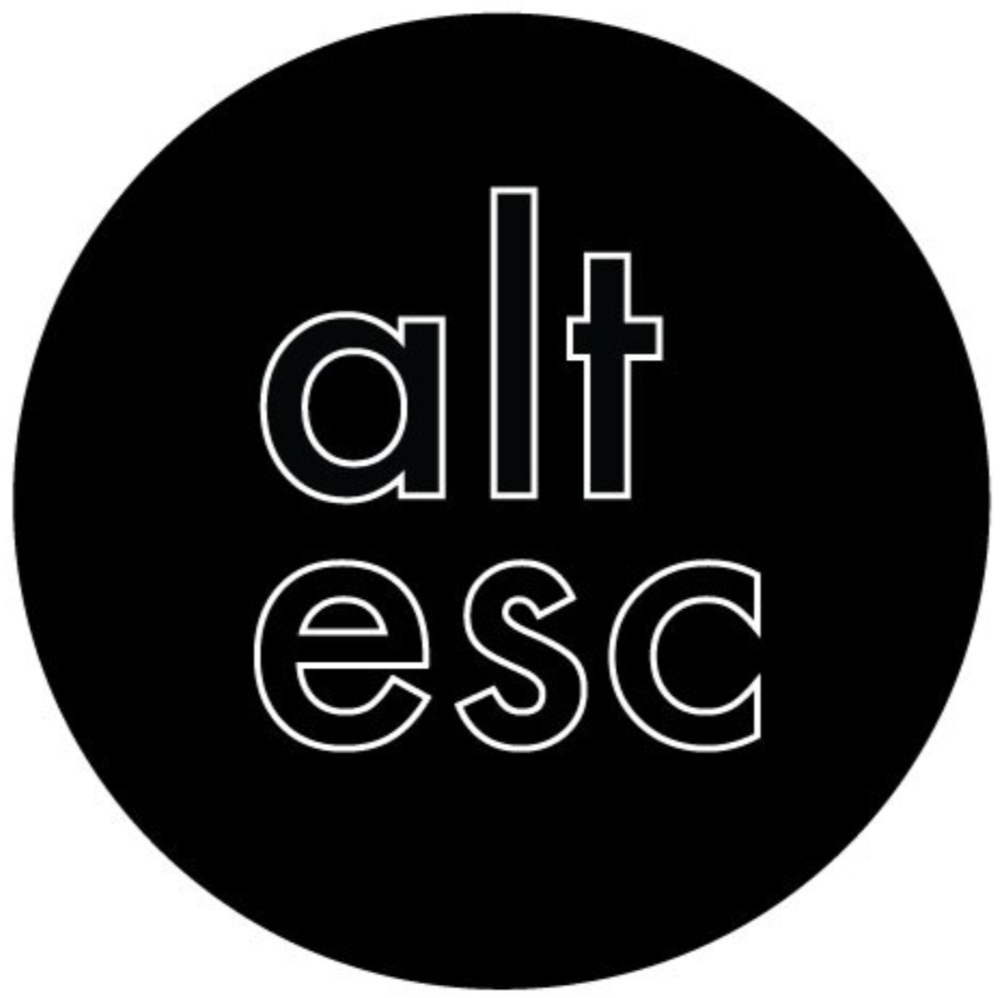CHRISTIAN LITTLE
Christian Little is a painter based out of Kingston, NY. A master at conveying textures, his paintings communicate with a digital language. We took a road trip to visit him at his studio where we discussed everything from reality dating shows to alternative versions of perception.
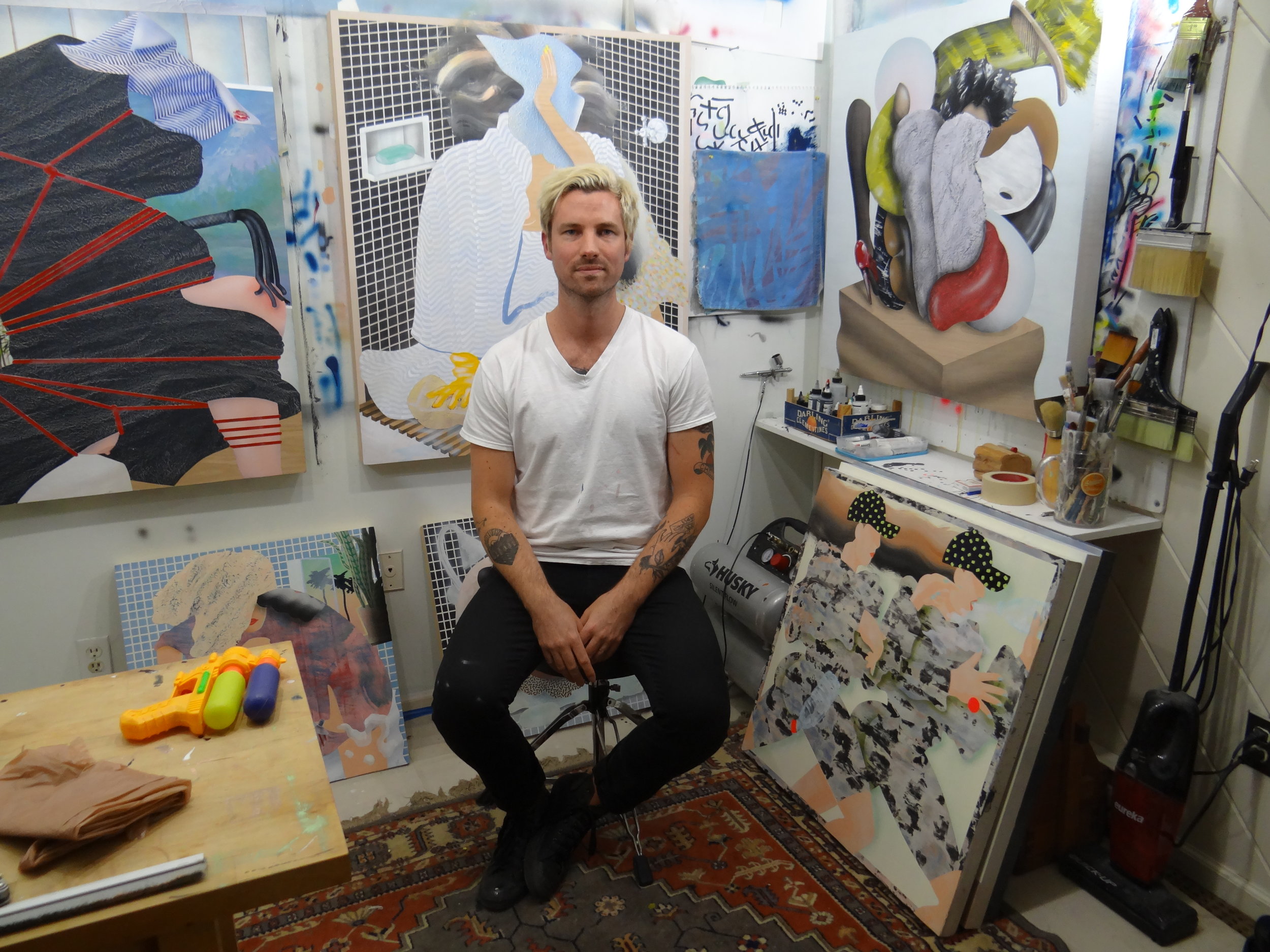
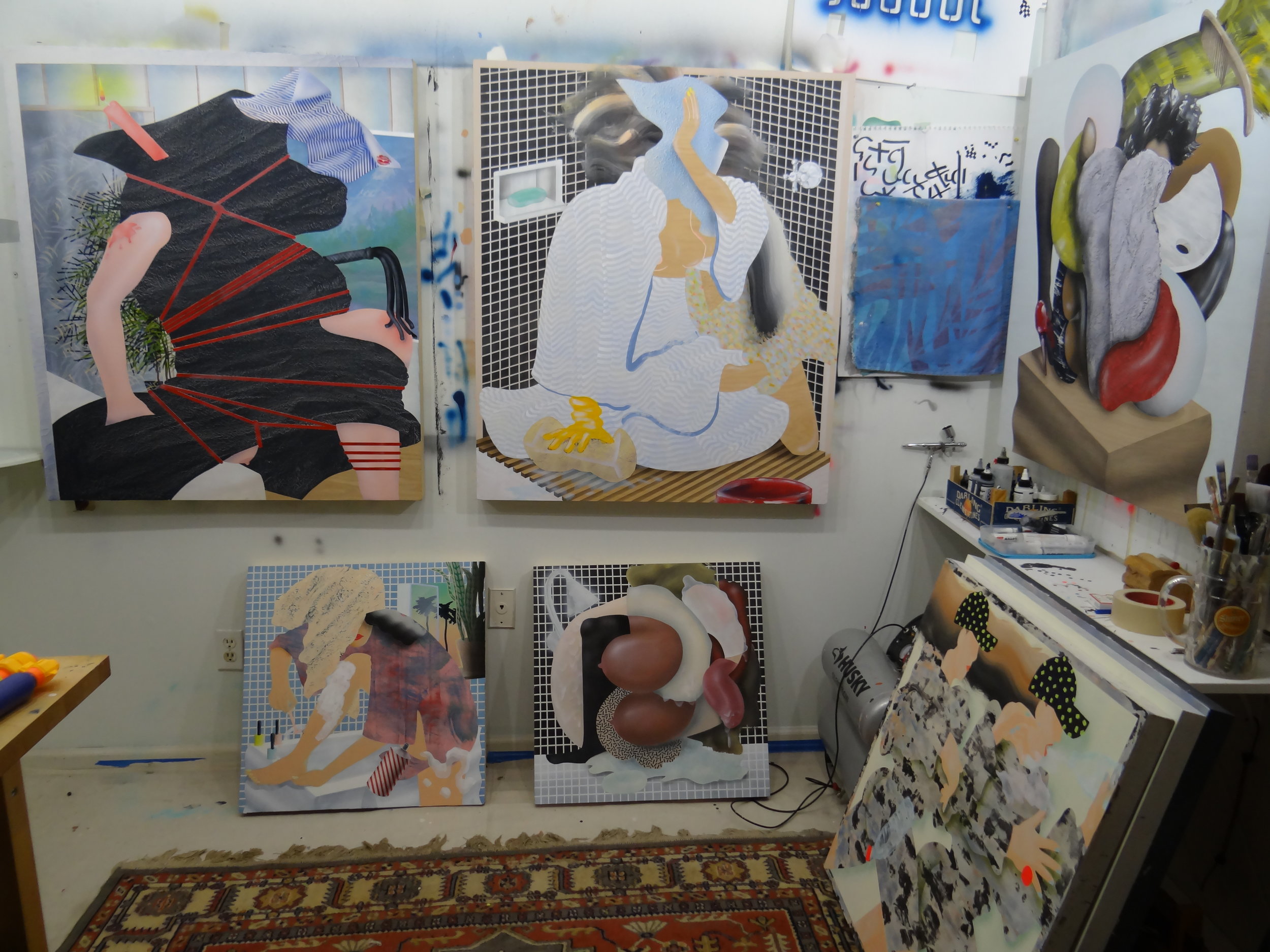

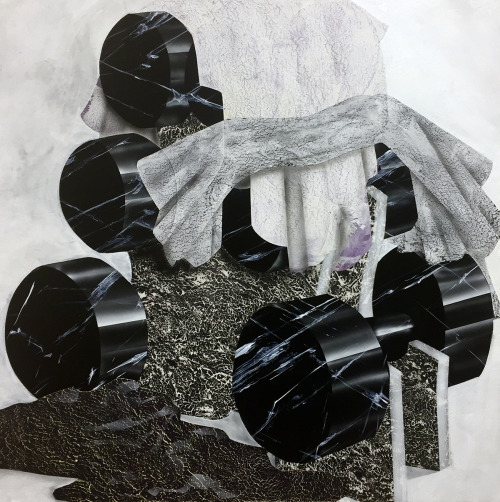
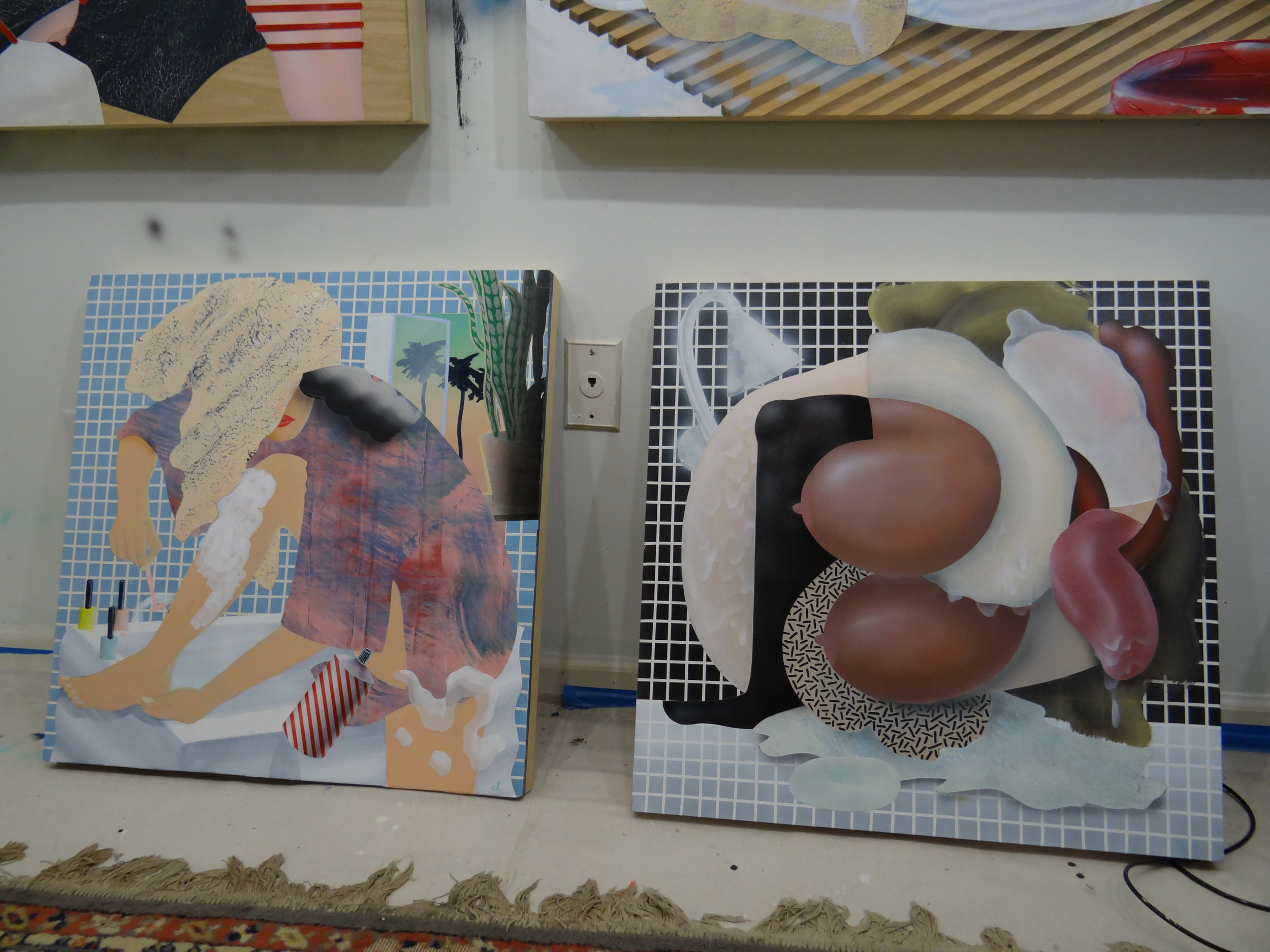
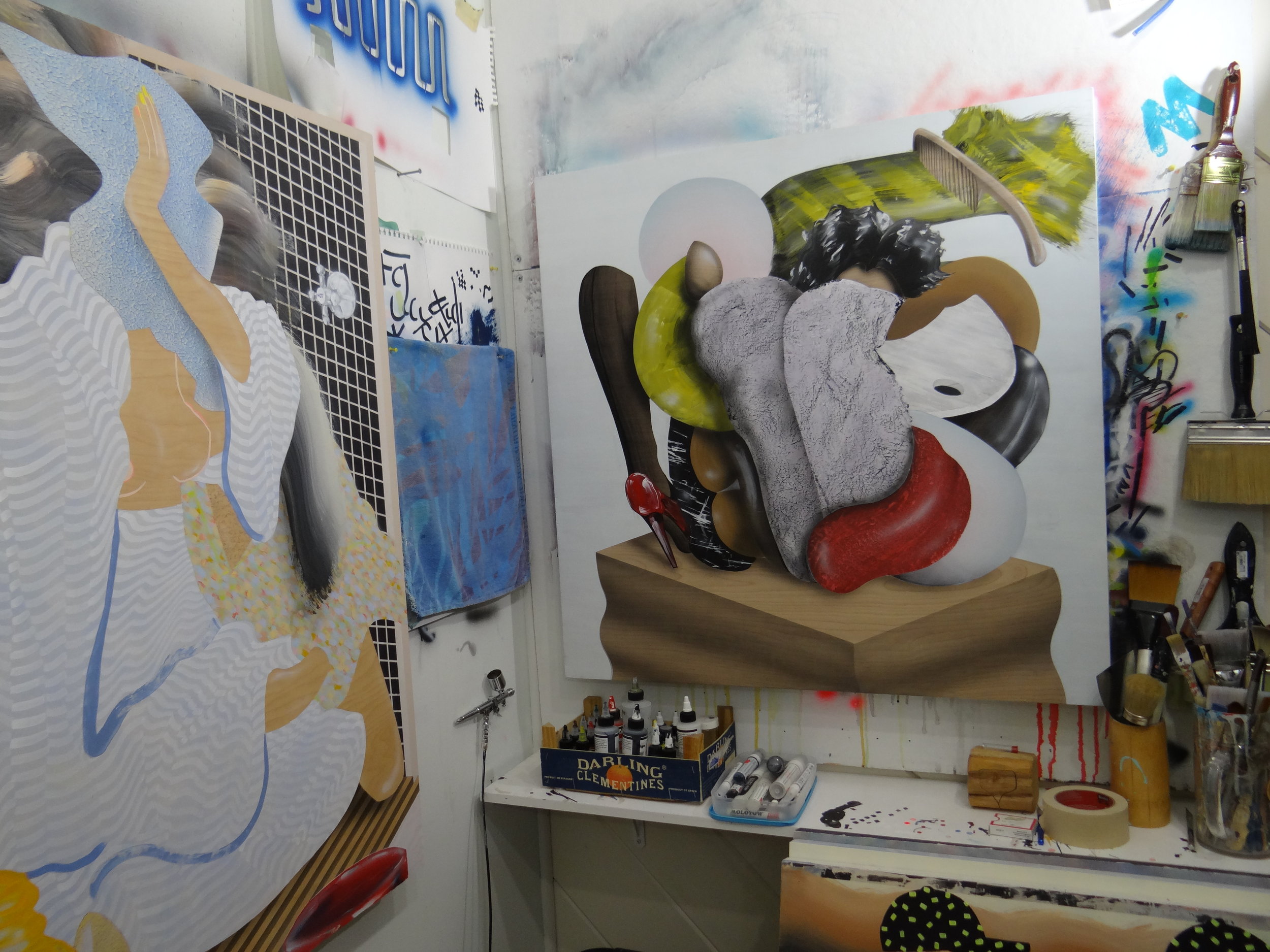
Most people know your paintings, but we heard you play music?
I’ve played in a couple of bands. I currently record with a friend of mine as Via Scuba. I also played in Rahim and we toured the United States and Europe. They were together for 10 years and I was with them for three.
What kind of music?
Postpunk. Like Fugazi and other bands on Dischord.
When did you start painting?
I've been painting for a long time. I received my B.F.A. from New Paltz in 2005, and I received my Masters from New Paltz in 2015. Also, I made wallpaper for seven years.
Wallpaper prints?
No, it was all handpainted wallpaper. It was like I went back to school for painting, but it was a totally different type of painting. We hardly used brushes. We used foam and gold dust. There were other crazy applications: gold leafing, using huge combs, collage. I left this academic history of painting (where you use oil), and I started using house paint, acrylics, and various processes to achieve different surfaces. That’s had a large bearing on my recent work. We did wallpaper for Obama's Oval Office. I painted every single stripe in that office. It was something like 400 stripes.
Did the wallpaper experience inspire the patterns/ textures that are present in your work?
It informed the process. Another factor that informed my process is my mom who is also an artist. She did furniture antiquing. I learned marbling from her.
We want to learn how to marble. What is the secret?
A feather. That is the basis of it. I'll only use a brush when I run out of feathers. I haven't used marbling too much in newer work.
Would you describe these paintings as portraits?
Portrait landscape hybrids. For a while, I was working on squares. I wanted to try to get outside of that, and all the paintings that were not formatted on squares turned out to be portraits instead of landscapes. I tried one landscape, and compositionally, it wasn't working for me. It fought me the whole time. Also, all of my paintings are portraits of the way I process information. They represent what I have taken in whether it be visual cues, experiences, or thoughts. I try to work on more than one piece at a time, so I don't overwork. That way I can have an outlet for an idea in more than one space. If a certain mark resonates with me in the real world, I will want to experiment with it in the paintings. It might work in three of them or only work in one. Working in multiples is a good way to have a soundboard for ideas.
Do your paintings have narratives?
In “Exhibitionists 17 (Going Out),” this person (could be a man or a woman) is getting ready to go out. The window alludes to a sunset. This indicates the start of the “going out” ritual where you present yourself to a social scene. This person is having a hard time getting ready. They missed a spot shaving. They cut themselves shaving. They knocked over the shaving cream bottle, so it's squirting all over the place. The protagonist is nonchalant about the ritual. The painting also refers to advertisement. The whole idea of getting ready to go out is a form of creative direction. You can present yourself in a certain way, but it is only a perception of you.
What is happening in “Exhibitionists 9 (Shower)”?
That's a sexy shower scene. It was one of the first paintings that I completed after grad school. After graduating, I had a repertoire of mark making that I wanted to experiment with in one painting. I wanted it to work in a way that it didn't feel like a weird collage (even though, ultimately, it kind of is). I wanted to paint sculpture that didn't exist. I have a couple different lines of work. This is from the Exhibitionsts series. It is very sexual. A lot of my work is. I’ve always liked dating shows and courtship rituals.
What dating shows did you watch?
I grew up watching “Love Connection.” All the MTV ones: “Singled Out,” “Next,” “Blind Date,” ”Date My Mom”... I love the idea of the courtship ritual. A lot of people want to find love and romance, and I feel like there is a primal life urge to find a partner to do things with.
Yeah, America is obsessed with it. “The Bachelor” is still one of the most popular shows in the country...
Do you ever listen to the podcast “Savage Lovecast”? It’s Dan Savage’s weekly show. Also, I grew up listening to “Loveline’ with Adam Carolla. He wasn't on the original anchor. That was Drew Pinsky. It’s formatted where people call in and ask questions. In my formative years, I listened to that after my parents went to bed. In America, there is definitely a general fascination with finding love (or morso the idea of “love”).
What does the grid represent in your work?
It is just a visual tool. Grids are inherent in painting history. Much of my mark making comes from a visual play in pattern making. I try to make static images resonate as moving. A painting is a still, finite thing, but we try to make it feel outside of itself. Dimensionality should be the forefront of any painter’s inquest. When I think about time and space in a static image on a flat surface (when I start bringing dimensionality into the image), that is when I start to think that I am working on something worthwhile.
How do you layout your paintings? Do you do it on the computer first?
It's all over. If I had a formula, it would change. Ultimately, I cover the surface with tape and draw on top of it. I do several drawings with different color markers until I arrive at a mark, and then I cut out the shapes. The process is almost like printmaking. Printmaking can be a reductive process. Japanese printmaking is a big influence.
Is the computer involved in any part of your process?
Yes, sometimes I'll take a photo and use an app to sketch an idea out. I bought an iPad recently, but I mostly use it as a sketch book. I take photos of my work and upload them, so I can view it on a different format. I know 99% of the people who view my work will see it through their phones, so it is good to keep a record of how it will look online and resolve any problems it might have there too. As far as understanding the composition, it is one of the tools I use. I don't do any patterning on the computer though. That is all just done on the spot. I do the same patterns over and over because I feel like the repetition of a motif helps you own it: it becomes part of your visual vocabulary that is recognizable to you.
There are a wave of painters who are trying to investigate how computers affected the medium and developed a whole new language.
Growing up, the first computer my parents took home was a Mac. I was 10 or 11. They bought this software tablet that you could draw on, and it would transpose the drawings onto the computer screen. I made Nirvana and Green Day posters with text and gradients. It helped me understand the whole idea of a generated image and of the image as not something strictly pictorial. The computer and early software programs were formative to my understanding of format and color and interaction with space. You can't be a painter now and not think about the ways in which computers and technology influenced the medium. If you don't think how about the influences of technology, you can’t be progressive. I understand the merits of resistance in certain ways, but then you come across as a luddite. You have to be aware of the slang of a language in order to maintain true fluency. If you want to be a fluent painter, you have to understand the different processes that influenced painting.
Can you tell us about the Pwrplnt show you were in a little while ago? How did you get involved in that show?
Tyler Thacker curated it. I highly recommend doing a studio visit with him. He is in Bushwick, and he is a pretty fascinating guy.
We’ve talked a lot about time, space, and alternate versions of perception. Are you big into philosophy?
I think about it, but I don’t read it much. I like Baudrillard. The first chapter of “Simulacra and Simulation” can be found online translated from English to “American.” It reads like it’s from the vantage point of a (well versed) bro at a frat party. I knew about Baudrillard’s work from the Matrix, understanding reality as it is or as it is shown to you in the forms of a red or blue pill. I’m also interested in media theory and advertising. Advertisements try to sell you realities that you can participate in. These scenarios can be pretty silly. I feel like my paintings are a form of advertisements (not for a product or a lifestyle, persay) but for an idea. They represent a possible scenario that could exist. I place the viewer into worlds to watch characters engage in acts they wouldn't typically be around for. It’s voyeuristic. Ultimately the main objective of my work is to present an alternate reality. I need to give the audience things to grab onto (focal ideas that are familiar) so the world becomes tangible. This is why I don’t live in just the abstract.
A lot of your paintings seem to be based at the gym.
They are comments on social status. I worked a lot of manual labor jobs, carrying rocks, lumber, and furniture. This is one way to gain strength. Comparably, lifting weights in the gym (during your free time) feels more vain and superficial. If you have the resources for a gym membership, you probably have a job that pays you well enough and isn't too physically taxing. It also relates to advertising because we do these tasks over and over again (like lifting weights) to achieve an idealized version of ourselves. But is it an ideal version because you feel good? Or because others will think you are more attractive? Is it just coming from a preexisting idea of beauty? I equally think this way about my art making. I want to like it. I want others to like it. It is kind of a silly thing I do with my free time, and I can do it because I can afford to do it with my time. I would love to go to a Planet Fitness (its Judgment Free Zone) and do plein air painting. I might get my ass kicked. I'd wear a beret. It would be more of a performance than actually about the painting. The purples the yellows... I'd love to do that, but I'd need to lose my mind first.
